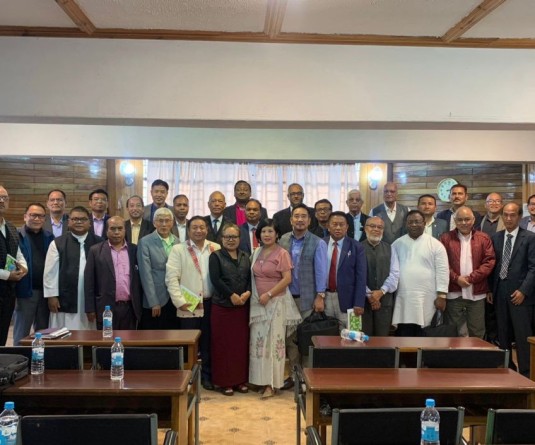
Dr Atola Longkumer
Bangalore
“I was born a Hindu, I had no choice. But I will not die a Hindu because I do have a choice.”
These are the famous words of Dr. B.R. Ambedkar, the chair of the drafting committee of the Indian Constitution. Dr. Ambedkar was a lawyer and an intellectual stalwart, trained in the best of Western universities: Columbia University, and the London School of Economics. Brilliance and charisma did not shield him from the discrimination meted out to the members of the Dalits by the so-called Brahmanical code of conduct. It is told that the peon of Ferguson College, where he taught after he returned to India, would throw the files/items related to Dr. Ambedkar, for fear that he (the peon) would pollute himself coming in contact with a low-caste member. Dr. Ambedkar and thousands of his followers converted to Buddhism in 1956.
Here’s another snippet:
“The caste whose occupation is the most degrading, the most indecent, the most inhuman of all, is known in coastal Andhra as pakis. In print, they are called manual scavengers or, more euphemistically still, porters of night soil. In plain language, they carry away human shit. They empty the “dry” latrines still widely used throughout India, and they do it by hand. Their tools are nothing but a small broom and a tin plate. With these, they fill their palm leaf-baskets with excrement and carry it off on their heads five, six miles to some place on the outskirts of town where they’re allowed to dispose of it….Nearly all of these workers are women. They don’t know what gloves are, let alone have them. As their brooms wear down, they have to bend their backs lower and lower to sweep. When their baskets start to leak, the shit drips down their faces. In the rainy season, the filth runs all over these people, onto their hair, into their eyes, their noses, their mouths. Tuberculosis and other infectious diseases are endemic among them.”
The long quotation is a description of the people ensnared in the caste hierarchy and discrimination in the larger part of modern India. The portrayal of the practice of caste and its vicious entrapment of people in debilitating indignity comes fromSujathaGidla in her book, Ants among Elephants: An untouchable family and the making of modern India.
Yet, another snippet of the oppression of caste in practice in the mainland India:
Christian cemeteries in some parts of South India, apparently still have separate burial spaces for the lower castes, usually below the higher caste Christians (Frontline/The Hindu, February 2011). Death seems not a leveller, (James Shirley) at least on this side of life.
That discrimination of people by the caste practice is prevalent even in the converted religion and its institutions is the fundamental argument of the Dalit Theology in Indian Christian critical thinking in the recent years.
Despite the ratification of the Indian Constitution in 1949, banning the practice of caste, the violence, exclusion, and discrimination based on caste continue. A cursory glance of any of the respected national newspapers’ reports provides evidence of this ground reality. An activist in Gujarat, Martin Macwan, have published recently a book, Bhed-Bharat: An Account of Injustice and Atrocities on Dalits and Adivasi, 2014-2018, which provides a catalogue of violence against the lower caste and Adivasi. (The Hindu, 13 July, 2019). For instance, it is reported that between 2014-2016, a total of 1,19,872 incidents of atrocities on Dalits, 19,671 incidents of atrocities on Adivasis, according to the national Crime Records Bureau.
The collage I have tried to depict with the snippets is to put forth a point: that the Nagas are indigenous people, who have been classified within the vicious discriminating caste hierarchy in the country. The ramifications of this act of being within this structure has curtailed the possibilities of many a young Naga persons from realizing their potential. For instance, pursuing medical studies, for long, Nagas have had to partake the tiny sliver of a certain percentage allotment, compounded further by the embedded corruptions and incompetence of the system itself. In deeper analyses, the tentacles of caste practices go beyond immediate visible discrimination.
The vicious discriminations of caste practice are analyzed, critiqued and written in reams of paper by brilliant, passionate, and just minds. Yet, it persists, in more than one form. To be part of modern India, unfortunately, is to negotiate and constantly resist this social reality.
In this crucible moment in Naga history, it is worthy looking further afield for inspiration. And complex as it is, the history of the relatively modern nation: United States of America, has much to offer in terms of insights for a people that struggles for freedom. And of course, Abraham Lincoln, the lawyer and 16th president of the country, comes to mind. Lincoln led the relatively new nation through one of its most tumultuous periods – the civil war and the abolishment of slavery. So, here’s a word from him: “if all do not join now to save the good old ship of the Union this voyage, nobody will have a chance to pilot her on another voyage.”




